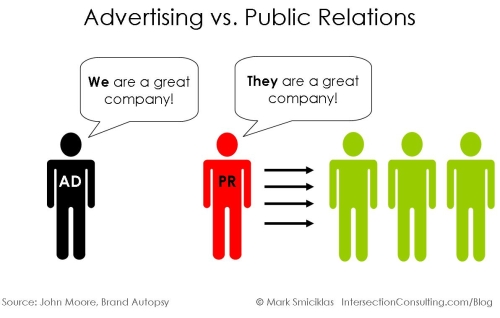
Public Relations are a notoriously difficult function to measure. More often than not, we use an advertising value equivalent, which, most obviously, gives you just that – the equivalent of a paid advertisement. Though widely criticised, not one accepted alternative to this has materialised.
Someone once said “Advertising you pay for, PR you pray for”, which I feel perfectly sums up the idea. It is proven that readers acknowledge and remember editorial over advertisements. The fact is consumers don’t feel as though they are being bought when they watch or read about something. Now, let’s not say readers have complete trust in journalists, but it would give the cause a bit more credibility if an established publication outlined the key factors that actually make a product work.
Clients often request an accurate measurement system that lists the total worth of a public relations campaign. Inextricably bound from other objectives, PR compliments sales, marketing, advertising and consumer reviews by increasing the awareness of an organisation in a cost efficient way, but can’t be accurately calculated because, let’s face it, how do we measure each person who sees the article, is prompted to go on the website, then makes the choice to buy a ticket online?
Media analysts have long suggested that social media will finally clarify the equation of what constitutes return on investment from public relations. Dubbed the “holy grail barometer”, social media is, according to Forbes.com, the ultimate validation for earned media. In this digital age, it’s not about media hits that trigger the response from consumers. Now, someone starts the conversation and the media hop on the bandwagon to see what’s trending.
In 2001, PBS released a documentary called “Merchants of Cool”, giving an inside look at how brands gain insight into the teenage mind. I first watched this documentary in high school and thought: They pay people to tell them what’s cool?! How is that possible! But now I understand: There is nothing more valuable to a client than knowing what their consumer wants. Instead of paying for this insight, all companies need to do is plug in and thousands of users will tell them.
Some call it citizen journalism, and maybe it’s not that credible, but it’s exactly what we communicators need. PRs create the conversation and users comment on it with honest opinions. Topics trend and create a hive of interest around a particular topic or product allowing us to “gauge our ability to create original and sufficiently compelling or edgy content to catalyse shared, aggregated or culturally curated conversations” (Forbes.com).
While traditional media can’t be mapped with the same accuracy, the consumers desire to be heard transcends physical and digital platforms. Yes, digital media allows for PRs to spread their message instantaneously, but it also lets us know what consumers are saying and what they want to hear by the same speed.
For the purpose of answering my own question I will say the value of PR can be determined by consumer response. Listening to the conversations allows you to understand your market and good reviews will float around in cyberspace, yet putting a figure on how PR affects the company dollar is, as ever, unpronounceable.

